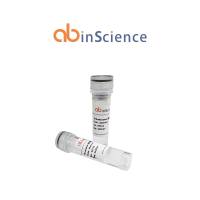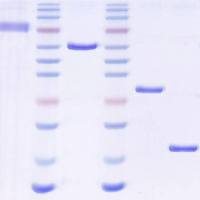Permeabilization of gram-negative bacteria with KPi/hexane for the release of L-asparaginase
互联网
794
- Harvest (10,000 rpm for 5 min) 24 h grown (in LB pH 7.5, 37 o C, 200 rpm) Escherichia coli , Enterobacter aerogenes or Pseudomonas aeruginosa cells.
- Wash once with 0.05 M potassium phosphate (KPi) bufferpH 8.6, and resuspended to A600 = 5.0 in the same buffer with 1 % hexane.
- Incubate the suspenssion at room temperature for 1 hour, briefly wortexing for every 10 min.
- Leave the tube caps open for 5 min in order to evaporate volatile upper phase (hexane) prior to analysis of L-asparaginase activity in the cell-free aqueous phase.
- Prepare cell suspensions also in distilled water or 0.05 M KPi with no hexane as controls.
- Measure the enzyme activity utilizing the Nesslerization reaction. This method utilizes the determination of ammonia liberated from L-asparagine in the enzyme reaction by the Nessler reaction. L-asparaginase catalyzes the hydrolysis of L-asparagine to L-aspartic acid and ammonia.
- Start the reaction by adding 0.1 ml permeabilized cell suspension or 0.1 ml supernatant of cell suspensions from aqueous phase into the pre-warmed 0.9 ml 0.01 M L-asparagine prepared in 0.05 M Tris-HCl buffer, pH 8.6 and incubate for 30 min at 37 0 C.
- Stop the reaction by the addition of 0.1 ml 1.5 M TCA.
- Centrifuge the reaction mixture at room temperature (10,000 rpm for 5 min) to remove the precipitate.
- Determine the ammonia released in the supernatant colorimetrically (A480 ) by adding 0.25 ml Nessler reagent into tubes containing 0.5 ml supernatant and 1.75 ml dH2 O.
- Vortex the content and leave at room temperature for 10 min.
- Read the A480 values against the blanks that received TCA before extract addition.









